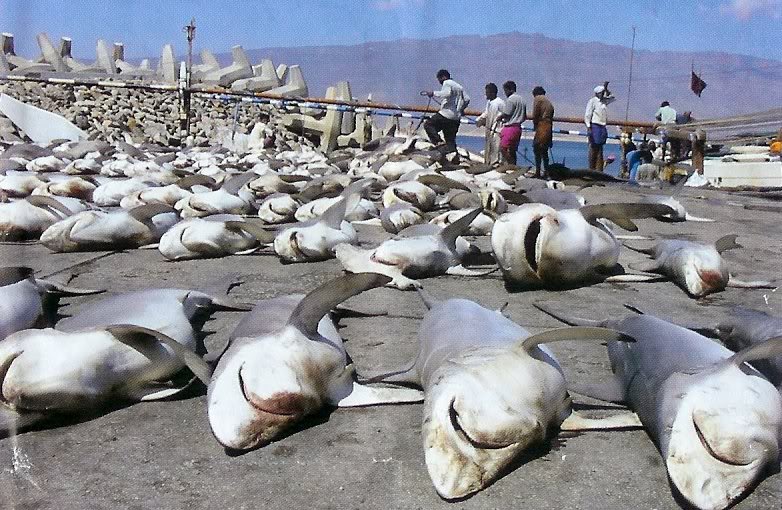John R. Platt recently examined the impacts of shark finning for his Extinction Countdown blog on Scientific American:
The appearance of a shark fin piercing the ocean surface is often seen as a sign of danger to humans. Even more dangerous to sharks is the sight of a shark fin floating in a bowl of soup.
Around the world, sharks are in crisis. Many species have suffered population declines of 90 to 99 percent in recent decades, mostly to feed the seemingly endless demand for the tasteless concoction known as shark fin soup, which is served to mark important occasions such as weddings and business deals in China and some other Asian communities. An astonishing 10.3 million kilograms of shark fins and shark fin–based products were imported into Hong Kong in 2011, according to statistics released last week by The Pew Charitable Trusts Environmental Group in the report, Navigating Global Shark Conservation: Current Measures and Gaps (pdf). The organization says Hong Kong imports about half of the world shark fin harvest.
The Pew group obtained these figures from the Census and Statistics Department of Hong Kong, but even they don’t tell the whole story. Previous research (pdf) has estimated the total worldwide shark fin catch to be three to four times what is legally reported. Because so much of the shark trade is illegal and carried out in the black market, the true total number of sharks killed each year is impossible to ascertain, but the Sea Shepherd Conservation Society and other organizations estimate it at more than 100 million. Another group, Shark Defenders, puts the annual average at 38 million, citing the same 2006 research that quantified the shark-fin trade.
Another hidden part of the story, according to the Pew report, is the types of sharks being caught. Many of the nations that allow shark fishing do not require good record-keeping and allow fishermen to log all of their catches simply as “sharks” rather than specific shark species. Some nations even report their take in extremely broad categories such as “sharks, rays, skates, etcetera,” so there’s no specificity to what their fishing fleets actually landed.
Read more from Scientific American: http://blogs.scientificamerican.com/extinction-countdown/2012/07/18/hong-kong-imported-10-million-kilograms-shark-fins/


Reblogged this on Left Handed in a Right Hand World and commented:
My friend Michelle is a big-time shark advocate (she even swims with them– on purpose!) so I already knew this was a major problem, but honestly these numbers are a sign of a problem that may be irreversible…
Has the problem recently got worse? Do you know why? I’m guessing that the rising prosperity of China may be part of it, but I don’t have data to support or refute that guess.